|
|
Objective: Bobruisk
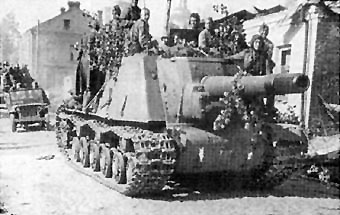 |
The Bobruisk Offensive
by Rich Hamilton
Operation Bagration’s three-point attack included an assault in the south near the city of Bobruisk. The attack in the center at Mogliev was intended to pin down a large part of the German reinforcements so they could not help relieve Bobruisk.
The First Byelorussian Front was given the southern breakthrough attack. It was to breakthrough the German Ninth Army’s defensive positions at Bobruisk and drive on toward Minsk.
|
|
General of the Army Konstantin Rokossovskiy led the attack. He is often lauded as the most capable of the four front commanders during Operation Bagration. He had been a decorated cavalry officer in the First World War. From 1937-1940 he was locked in a GULAG during Stalin’s political purges.
However, by June 1944 he had risen to become one of the few generals trusted by Stalin. Rokossovskiy’s plan was to break through the German 9th Army in two places and encircle the fortified city of Bobriusk. Then he would drive his forces on to Minsk.
Rokossovskiy had a massive force at his command. The First Byelorussian Front consisted of 3rd Army with 9th Tank Corps, 28th Army, 48th Army, 61st Army, 65th Army, 1st Guard Tank Corps, and 1st Mechanised Corps. The Front also included a large Calvary force of the 2nd, 4th and 7th Guards Calvary Corps. The 6th and 16th Air Armies, the 4th Artillery Corps, and numerous independent artillery formations offered further support to the Front.
|
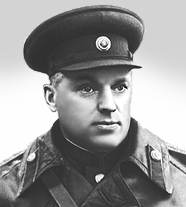 |
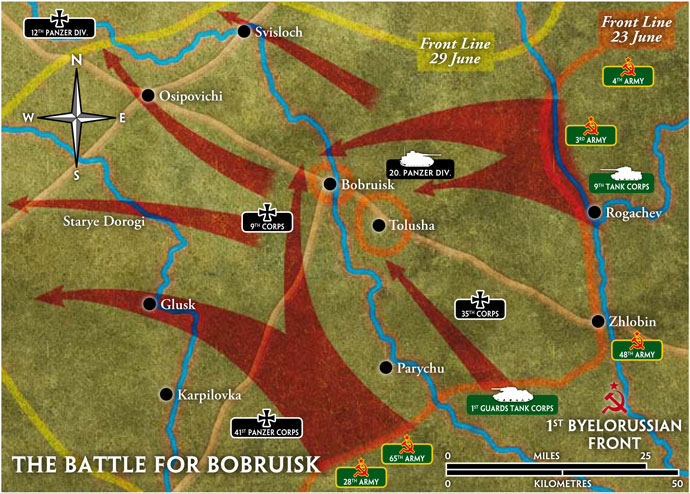 |
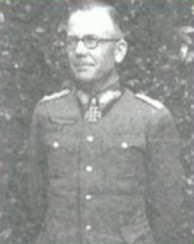 |
Despite his strong force, Rokossovskiy was in no position for things to
go wrong, which inevitably it did. The great deception campaign that
disguised the Soviet build up pf Operation Bagration was not completely
successful. Patrols of the German 134th Infantry Division discovered
that the three German regiments on the Bobruisk line were each facing a
full Soviet division.
General Hans Jordan, the commander of the German 9th Army, took these
findings to Field Marshal Busch, commander of Army Group Center.
However, the Soviet tank formations were not discovered, and Busch was
not one to go against the consensus of Hitler and the German High
Command, therefore the reports were dismissed as incorrect.
Nonetheless, other elements of the German 9th Army detected the build
up of artillery and aircraft, and many of the other German units were
detecting a build up in their sectors.
|
|
Rokossovskiy’s planning was meticulous as he seemed to have thought of
everything. The Soviets even constructed corduroy roads to ensure a
rapid advance through the swampy ground near the Pripyat Marshes.
However, the most important aspect of the Soviet planning was the
change in tactics. A German 9th Army report described the new Soviet
approach,
“The enemy adopted completely new tactics. He no longer
attacked as in the past along a broad front with very heavy artillery
support, but instead employed concentrated groups of infantry supported
by highly concentrated and well controlled fire from heavy weapons. He
went first for good tactical ground to establish favourable initial
positions. Behind these groups, undisclosed until needed, lay tank
forces to follow on and break through.”
|
| The attack began on 23 June 1944 with a massive artillery barrage.
Things did not go well on the first day as the entire front was covered
in bad weather, which made the planned air support impossible. Without
this added firepower, the German defenders were able to hold the line
against the initial Soviet onslaught. The attack was further
complicated by the marshy conditions brought on by the Drut River
flooding. However, the Red Army did manage to inflict heavy casualties
on the German 9th Army. |
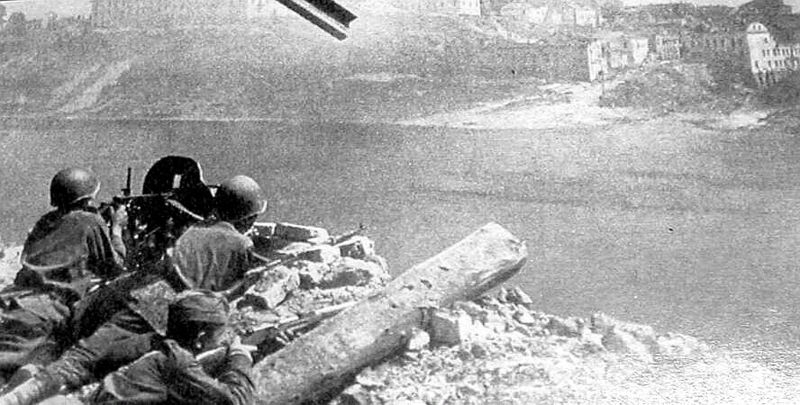 |
|
During the night the weather cleared which allowed the Soviet air force to swing into action. Rokossovskiy ordered the massive artillery bombardment to be repeated on 24 June. The Soviet 3rd Army forced a breakthrough to the north east of Bobruisk where the German 9th and 4th Army lines met. The General Jordan sent in his only reserve, the severely weakened 20th Panzer Division, to try and stem the tide.
|
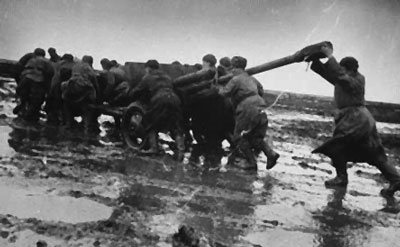 |
The Soviets committed the 65th Army with the 1st Guards Tank Corps to
exploit the German weakness. After heavy fighting the 20.
Panzerdivision was driven back by the Soviet armor. Jordan ordered the
German panzers to withdraw toward Bobruisk. An eighteen-mile wide and
six-mile deep breakthrough had been forced into the German position by
the end of 24 June.
On
25 June, Rokossovskiy committed more forces into the breakthrough
including the Calvary Corps. The German forces broke and retreated to
Bobruisk where they hoped to cross the Berezina River to safety.
|
During the retreat, Soviet aircraft inflicted great damage on the fleeing Germans in a scene compared to Napoleon’s retreat in 1812. When the routed German troops reached the river, Busch enforced Hitler’s no retreat policy, and much of the retreating German forces were not allowed to cross.
|
|
Confused and demoralised, the trapped German troops waited for the
Soviet axe to fall. Rokossovskiy ordered the Soviet Calvary to attack.
Elements of five German divisions were now trapped and trying to cross
the river. All attempts to escape the pocket failed and the Soviet
killed or captured thousands German soldiers. By the end of 27 June,
the Soviets were converging on Bobruisk and soon surround the city.
Behind the German lines reinforcements were arriving to try and stop the desperate situation and one German division commander was reportedly greeted with “Good to see you – Ninth Army no longer exists!”
During the night of 28 June the Germans attempted to breakout of the city which succeeded in getting 12,000 German troops out, but they were mostly with out any equipment or heavy weapons.
|
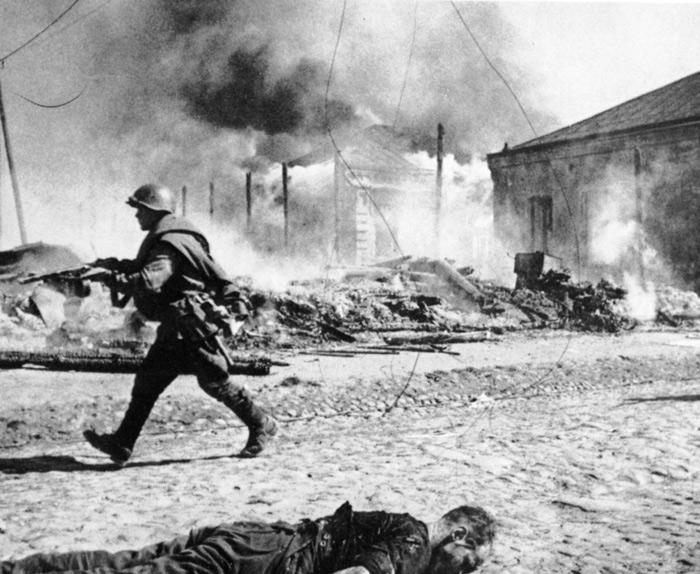 |
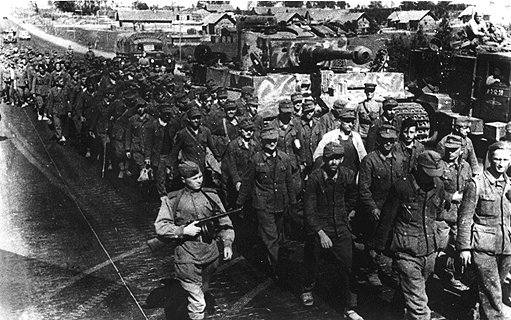 |
On 29 June the Soviets entered the city. After intense fighting with
the remnants of the German defenders, the city fell. Soviet sources
claimed to have taken 20,000 prisoners and to have killed 50,000 German
troops during the fighting. One Soviet writer said, “Men are walking
over German corpses. Corpses, hundreds and thousands of them, pave the
road; lie in ditches, under the pines, in the green barley. In some
places, vehicles have to drive over corpses, so densely the lie upon
the ground.”
The fall of Bobruisk marked the end of resistance by German 9th Army and the road to Minsk now lay open for the Red Army.
|
Last Updated On Tuesday, December 2, 2008
|
|